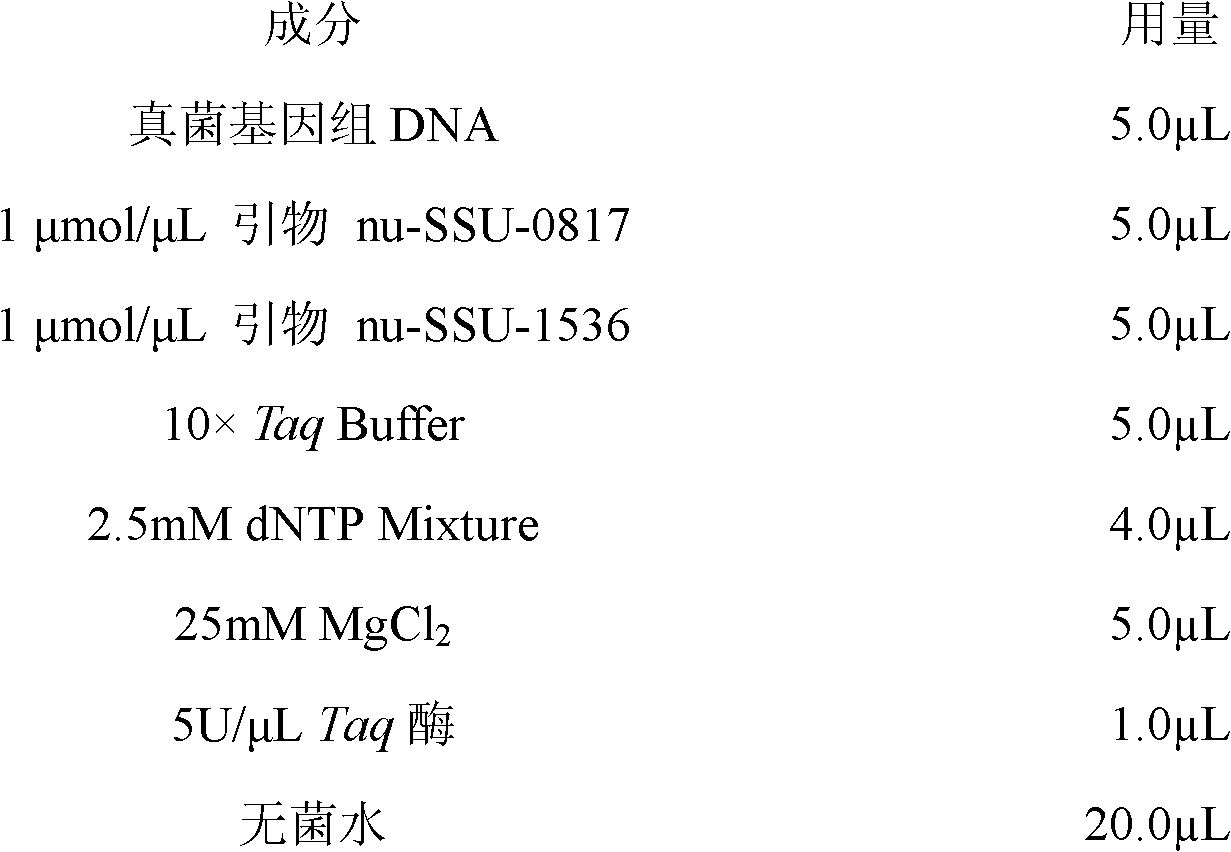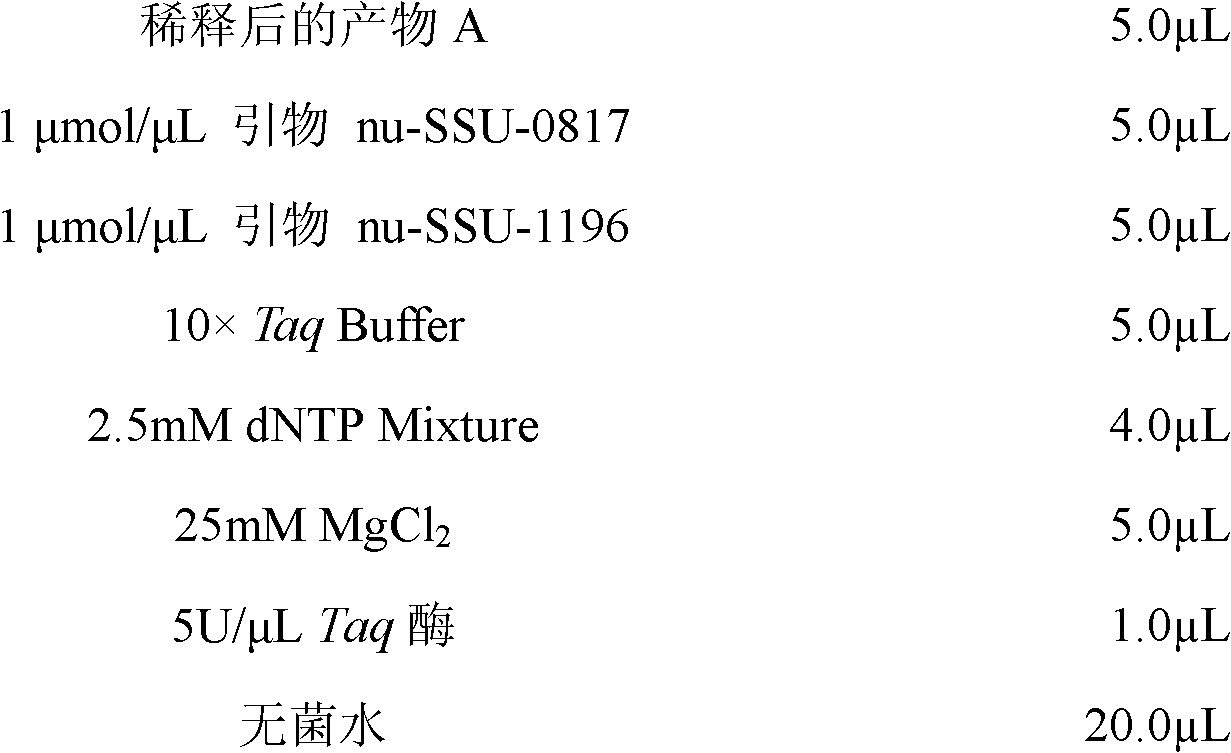Method for detecting fungal diversity in traditional soybean paste fermentation process
A fermentation process and diverse technology, applied in biochemical equipment and methods, microbial measurement/inspection, etc., can solve the problems of heavy workload and inaccurate detection results, and achieve high sensitivity, repeatability and reliability , The test process is simple and convenient
- Summary
- Abstract
- Description
- Claims
- Application Information
AI Technical Summary
Problems solved by technology
Method used
Image
Examples
specific Embodiment approach 1
[0009] Specific embodiment one: the method for this embodiment detection fungal diversity in traditional bean paste fermentation process, carry out according to the following steps: one, take by weighing 10g bean paste sample, join in the phosphate buffer saline solution of 50mL 0.1mol / L with pipette Pipette the liquid until suspended, then add glass beads, shake for 5min, then centrifuge at 200r / min for 5min, and collect the supernatant; 2. Wash the precipitate with 0.1mol / L phosphate buffer, then centrifuge at 200r / min for 5min , collect the supernatant, repeat this step 3 times, 3, combine the supernatant obtained in step 1 and step 2, centrifuge at 9000r / min for 12min, discard the supernatant, collect the precipitate X, and dissolve the precipitate X with 5mL 0.1mol / L The phosphate buffer solution was washed 3 times to obtain the washed cells, and 8 mL of 0.1mol / L phosphate buffer solution was added to the cleaned cells, blown to suspend with a pipette, oscillated evenly, a...
specific Embodiment approach 2
[0013] Specific embodiment 2: The difference between this embodiment and specific embodiment 1 is that in step 3, the method for washing the precipitate X with 5 mL of 0.1 mol / L phosphate buffer solution is specifically: adding 5 mL of 0.1 mol / L phosphate buffer to the precipitate X Phosphate buffered saline solution, then blown to suspension with a pipette, and centrifuged at 9000r / min for 10min. Others are the same as in the first embodiment.
specific Embodiment approach 3
[0014] Specific embodiment three: the difference between this embodiment and specific embodiment one or two is: the reaction system of the first PCR amplification in step five is a 50 μ L reaction system, which consists of the following components:
[0015]
[0016] The PCR amplification conditions were: 94°C pre-denaturation for 2 min, 94°C denaturation for 30 s, 52°C annealing for 30 s, 72°C extension for 45 s, a total of 35 cycles, 72°C extension for 7 min, and 4°C incubation. Others are the same as in the first or second embodiment.
PUM
 Login to View More
Login to View More Abstract
Description
Claims
Application Information
 Login to View More
Login to View More - R&D
- Intellectual Property
- Life Sciences
- Materials
- Tech Scout
- Unparalleled Data Quality
- Higher Quality Content
- 60% Fewer Hallucinations
Browse by: Latest US Patents, China's latest patents, Technical Efficacy Thesaurus, Application Domain, Technology Topic, Popular Technical Reports.
© 2025 PatSnap. All rights reserved.Legal|Privacy policy|Modern Slavery Act Transparency Statement|Sitemap|About US| Contact US: help@patsnap.com



